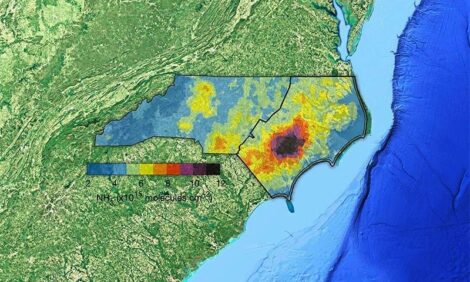



Genetic Variation and Distribution of PRRS Virus on Infectivity and Pig Growth
Research from Italy shows the genetic variability of the porcine reproductive and respiratory syndrome (PRRS) virus is affected by time and region, which may have an impact on future vaccine development. Landrace animals seemed more susceptible to the virus that other breeds studied.The porcine reproductive and respiratory syndrome (PRRS) is a devastating disease for the pig industry, say Bouabid Badaoui from Parco Tecnologico Padano in Lodi and co-authors there and at Università degli Studi di Brescia and Istituto Zooprofilattico Sperimentale della Lombardia e dell'Emilia Romagna in Lodi, all in Italy.
In a study published in BMC Veterinary Research, they report their analysis of the genetic variability of PRRS virus (PRRSV) as well as the relationship between the genetic variability, the geographical and temporal distribution of the PRRSV strains. They also investigated the association between the glycosylation patterns in PRRSV sequences and pigs growth.
The data highlight that PRRSV strains evolve rapidly on individual farms, and temporal evolution of PRRSV is an important factor of genetic variability.
Analysis of glycosylation sites in the glycoprotein 5 (GP5) ectodomain revealed that PRRSV isolates had seven combinations of putative N-linked glycosylation sites of which the N37/46/53 sites was found in 79 per cent of the sequences.
No significant relationship was found between the genetic variation of the PRRSV strains and the geographic distance.
However, a significant relationship was found between the genetic variation and time of sampling when farm was considered as a factor in the analysis.
Furthermore, the commercial semen from artificial insemination centres was not a source of PRRS transmission.
PRRSV with the glycosylation site at position N46 (N46+) were observed to have higher burden on pigs and accordingly the corresponding infected pigs had lower average daily gain than those infected with PRRSV lacking the glycosylation at N46 (N46-) position site.
This study showed that the number of piglets by litter infected by PRRSV was lower for the Landrace breed than for the other studied breeds (Large White, Duroc and Pietrain).
The PRRSV genetic variability which is determined by a local and temporal evolution at the farm level could be considered in a perspective of prevention, concluded Badaoui and co-authors.
The association between the PRRSV glycosylation patterns and its virulence could be of interest for vaccine development, they reported.
Finally, they added that the differences of resistance to PRRSV infections among pig breeds might open new horizons for the genetic selection of robustness against PRRSV infection.
Reference
Badaoui B., R. Grande, S. Calza, M. Cecere, M. Luini, A. Stella and S. Botti. 2013. Impact of genetic variation and geographic distribution of porcine reproductive and respiratory syndrome virus on infectivity and pig growth. BMC Veterinary Research, 9:58. doi:10.1186/1746-6148-9-58
Further ReadingYou can view the full report (as a provisional PDF) by clicking here.Find out more information on Porcine Reproductive Respiratory Syndrome (PRRS) by clicking here. |
April 2013







